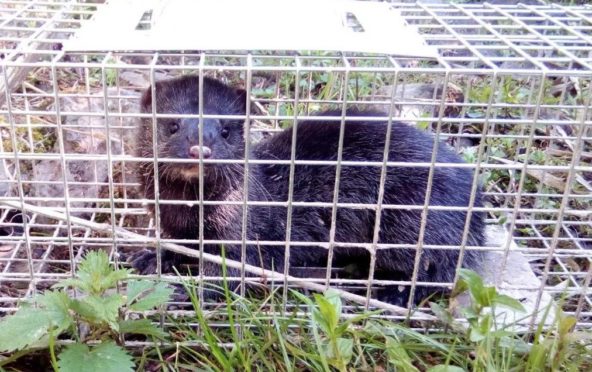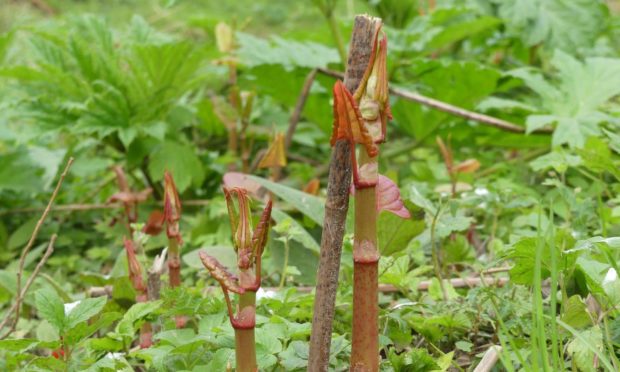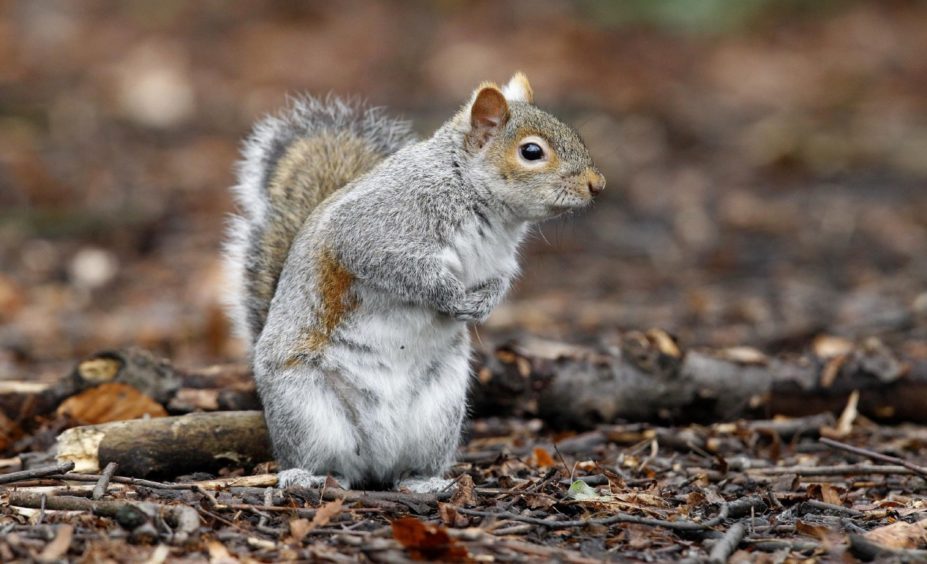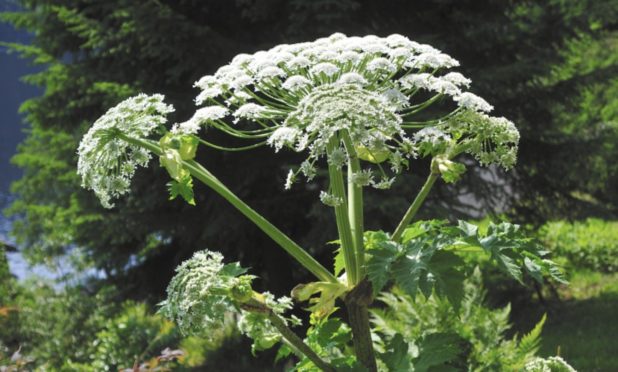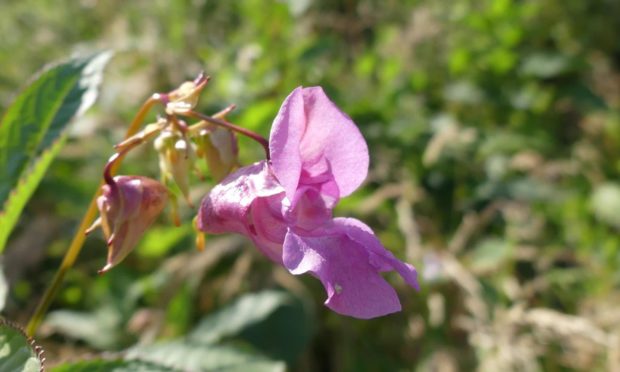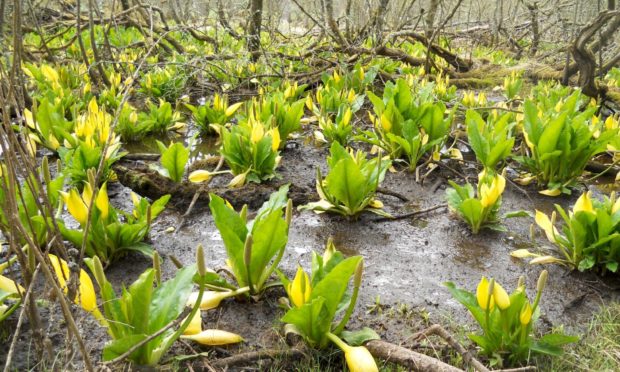Today marks the beginning of National Invasive Species Week, where conservationists across the country highlight the most damaging plants and animals causing havoc in ecosystems across the UK.
Although there are many non-native species in the UK that have been introduced by humans to the British Isles, many do not pose wider threats.
The Scottish Environment Protection Agency says there are more than 900 non-native species in Scotland, however, a minority of them have the ability to spread rapidly and overwhelm the native flora and fauna.
These are called invasive non-native species, or sometimes “invasive alien species”, and can cause severely adverse ecological, environmental and economic impacts if they spread out of control.
Here are six examples to look out for when out enjoying Scotland’s beautiful natural landscapes.
Japanese Knotweed
This plant was first brought to Europe in 1849 from Asia in 1849, and was first recorded in the wild in Britain in 1886.
Although it was originally considered an ornamental plant prized for its use in gardens and parks, Japanese knotweed can form into dense strands that stop native flowers and shrubs from being able to grow.
It can be identified by its bamboo-like stem which features purple speckles, and triangular green leaves on zig-zag twigs.
The problematic plant has extensive roots that can grow up to 9.8ft deep into the earth, making it difficult to full remove from a site.
You can find it growing in environments like riverbanks, railways, roadsides, and disturbed ground.
To report a sighting, click here.
American Mink
One of the most well-known and devastating invasive species in Scotland is the American mink, which spread through the country after escapes from fur farms in the latter half of the 20th century.
Part of the mustelid family of animals, the highly efficient predator is related to carnivores like weasels, ferrets and wolverines.
It poses a particular threat to ground-nesting birds, and as a result the Hebridean Mink Project was established to eradicate the animals from the Outer Hebrides and save the populations of birds that depend on the islands.
On the mainland, the semi-aquatic American minks are blamed for the decline in British water vole populations.
To combat the spread of minks, the Scottish Invasive Species (SISI) Initiative has a “mink raft” project, which puts devices onto rivers that capture tell-tale paw prints of the creatures on clay pads.
When it is established the animals are in a particular area, live capture traps are then put in place in order to catch and humanely kill mink.
To report a mink sighting in the Outer Hebrides, click here.
And to report a mainland sighting, click here.
Grey Squirrel
Although they look cute, this alien species was first introduced to the UK from North America by people in the late 1800s.
The mammals are much larger than Scotland’s native red squirrels, and can commonly be seen in trees across the country.
However, they have played a part in the dramatic decline of red squirrels through the spread of disease like squirrelpox and outcompeting the reds for both food and living space.
Although 75% of the UK’s remaining red squirrels are found in Scotland, their numbers have plummeted in recent decades to just around 120,000.
If you see any grey or red squirrels, you can report your sighting to the Saving Scotland’s Red Squirrels project, which seeks to help save the reds in Scotland and eliminate the threat of the greys.
Giant Hogweed
This dangerous plant can cause severe skin burns and blisters with its toxic sap, and should be avoided by both humans and pets alike.
Originally introduced to the UK in around 1820 for its beauty in gardens, the species was also deliberately planted beside rivers and ponds.
It is now widespread throughout Britain, and grows typically by lowland rivers and on wasteland.
When flowering, it can ready up to 9.8ft tall, with distinctively spiky lower leaves that can be as large as 3.2ft in length.
Because each plant can produce up to 30,000 seeds, some of which can survive for more than three years in soil, it has the potential to spread far and wide.
If you happen to touch giant hogweed, wash the affected area in water as soon as possible, and seek advice from a pharmacist.
To report a sighting, click here.
Himalayan Balsam
With its pretty pink flowers, Himalayan balsam was brought to Britain in 1839, and has spread across the nation with the aid of its explosive seed capsules, which scatter seeds over a distance of more than 20ft.
Because its strands are so dense, it crowds out many native species, and its shade blocks sunlight from smaller plants.
It also produces a great deal of nectar, meaning it can outcompete native flowering plants for the attention of pollinating insects like bees.
The plant can be seen dominating riverbanks, but in winter, it dies back, leaving bare river banks that can become susceptible to erosion.
However, compared to the other species detailed so far, this invader can easily be removed by pulling it directly from the soil by hand, a task which is often carried out by volunteers.
To report a sighting or find out how to volunteer to clear it from Scotland’s waterways, click here.
American Skunk Cabbage
The striking American skunk cabbage features large green leathery leaves of up to around 5ft in length, and bright yellow flowers, but due to its size it can shade out and out-compete many smaller native plants.
The species is popular in gardens, but has over the years gradually escaped into the wild, and can be found on pond margins, streamsides and wet woodlands.
It was first recorded in the wild in Surrey in 1947, and was originally brought to the UK from North America as an ornamental plant in 1901.
Along with its huge leaves and yellow flowers, it can also be identified by its pungent scent – hence the name.
It was banned from sale in the UK in 2016, and gardeners are urged to be very careful if they are disposing of the plant to ensure further expansion of the plant in natural environments does not take place.
To report skunk cabbage, click here.
